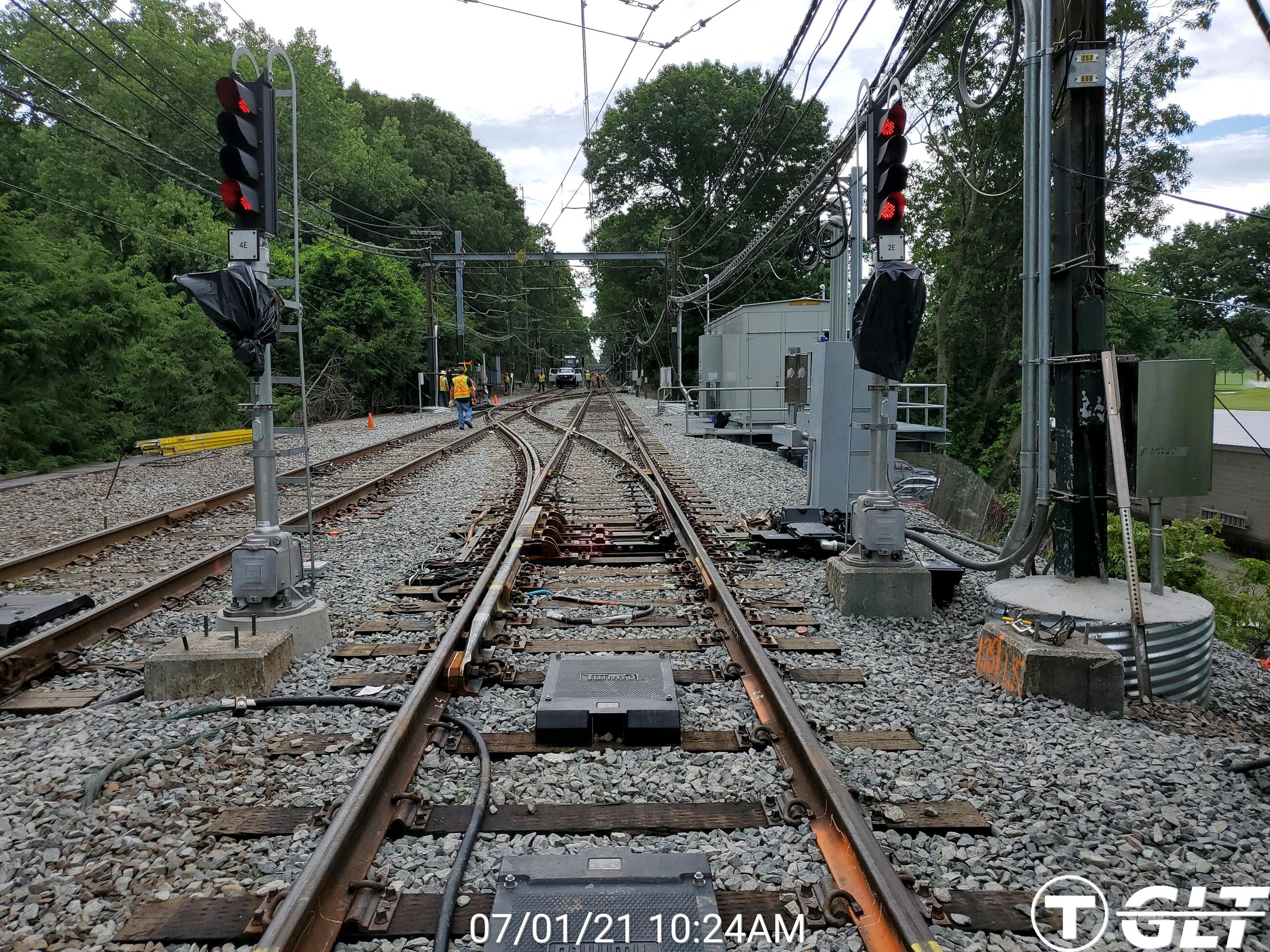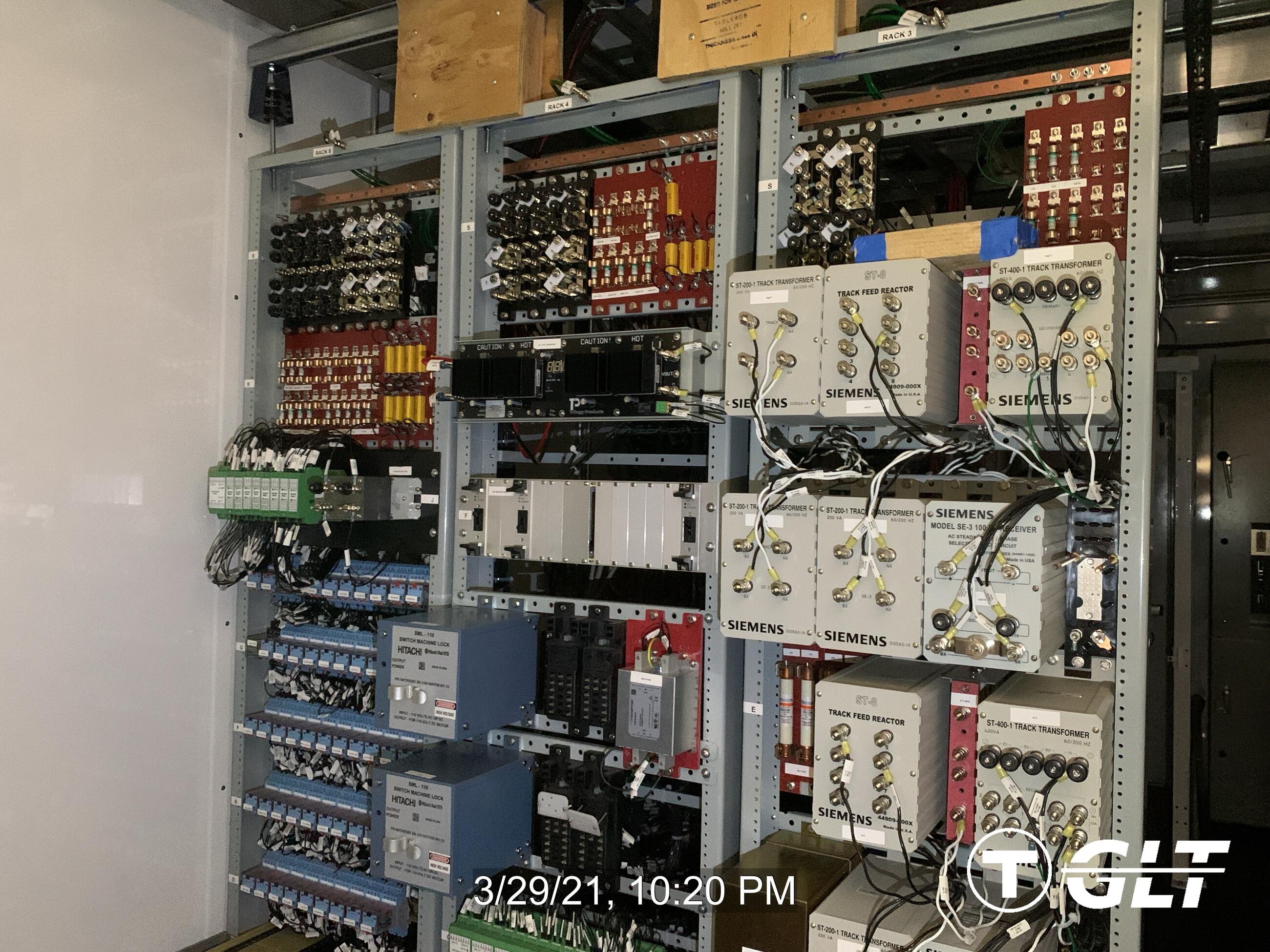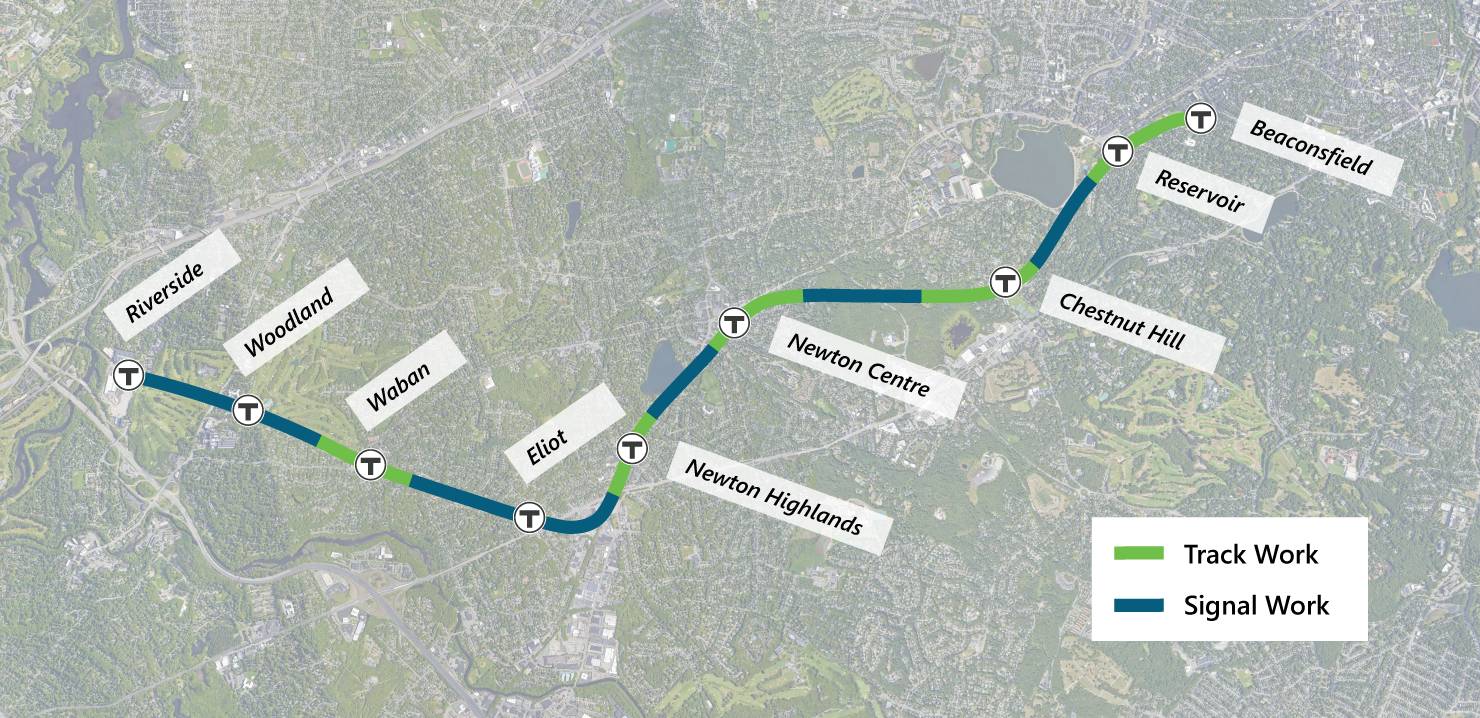MBTA Completes Green Line D Branch Track and Signal Replacement Project, Bringing Safer, More Reliable Service to D Branch Riders
Posted on December 10, 2021
Today the MBTA announced the completion of the Green Line D Branch Track and Signal Replacement Project, enhancing safety, reliability, and resilience. This project began in June 2018 as part of Green Line Transformation program with the goal of improving track conditions and signal efficiency while also reducing the overall risk of maintenance delays and need for repairs. Since June 2018, 25,000 feet of track on the D Branch have been replaced between Riverside and Beaconsfield Stations as well as 6.5 miles of signals.
“We’re excited to see the completion of this project, bringing improvements to D branch riders through safer, more reliable Green Line service. We will continue to monitor, test, and improve the conditions of the tracks, trains, signals, and more across the system,” said MBTA General Manager Steve Poftak. “While the completion of this project is a successful milestone for Capital Transformation, we also recognize that more work needs to be done. We’re committed to making the Green Line fully accessible, and we ask for the community’s continued patience and support while we work towards this goal of improving the overall rider experience for all.”


A brief video announcing the completion of the Green Line D Branch Track and Signal Replacement Project is available online.
This project aimed to improve the condition of the D Branch. Prior to the Track and Signal Replacement Project, outdated signals were responsible for 120 signaling incidents on the D Branch during 2017 and 2018. These incidents caused extensive delays and reduced headway adherence. Replacing signals with modern technology increases on-time performance by reducing signal problems and improving the rider experience. The new signals will be much easier to monitor and fix, and will provide quicker and more reliable transportation across the D Branch. Replacement of the tracks eliminates over 2,000 feet of slow zones, which provides a savings of two-and-a-half minutes of travel time in each direction.

“Thank you to everyone for your patience and cooperation throughout this project,” said MBTA Chief of Capital Transformation Angel Peña. “Making these improvements is integral to successfully transforming the Green Line. Future improvements planned for the D Branch will help us reach our goal of making the D Branch the first branch of the Green Line that is fully accessible. Stay tuned for more updates on future projects regarding the reliability and accessibility of the Green Line.”
The D Branch was once a Commuter Rail route, and when converted to a light rail trolley system in the 1950s, the MBTA installed much of the signal infrastructure that was still in use when this project began. When there was a problem experienced within this old system, work crews were required to travel directly on to the tracks to diagnose and fix the issue. With the more centralized, digital system now currently complete on the D Branch, the signal system is easier to maintain and monitor. The MBTA’s work crews will now be able to easily diagnose and fix potential issues faster.
Before construction began in 2018, the average age of the tracks on the D Branch was over 30 years old. These tracks were replaced, bringing riders faster travel times, increased safety, better ride quality, and a lower risk of service disruptions from track issues.
Over three years, construction used weeknights and weekends to perform track and signal upgrades with shuttle buses providing alternative service. Early in the project, maintaining late-night service for baseball fans at Fenway Park significantly limited the duration of time that crews could work on the D Branch. The preliminary phases of the COVID-19 pandemic presented further complications to safely complete the work while providing the robust service needed for first responders.
In response to these challenges, the Green Line Transformation team devised a new strategy to accelerate the project during the pandemic. The team completed four sets of nine-day, full-access closures during summer 2020 and summer 2021, accelerating construction and allowing crews to complete the most disruptive track work in a short amount of time. These surges in construction work brought the overall project to 95% completion after the fourth and final closure.
In addition, continued close collaboration with Fenway Park allowed the MBTA to meet the needs of fans with robust alternative service through the use of express shuttle buses from Riverside Station to downtown Boston, thereby mitigating the impacts for riders and allowing crews to access the tracks for longer periods of time.
“Knowing Riverside Station’s popularity with Red Sox fans traveling from the west of Boston, the Boston Red Sox and MBTA worked together this spring and summer to ensure baseball fans had safe and reliable public transportation options to and from Fenway Park while D Line safety improvements were taking place,” said Boston Red Sox’s Executive Vice President of Legal & Government Affairs Dave Friedman. “We appreciate the collaboration and always encourage our fans to consider their public transportation options when visiting Fenway Park.”
Throughout the project, transparency and information sharing were high priorities for the team. The Capital Transformation team sent weekly email updates to alert riders and abutters about the planned activities and schedule of the construction. The MBTA recognizes that construction can be disruptive, and the team worked to mitigate disruptive noise and other impacts. Contractors were required to muffle sounds through noise blankets, shielding, and sound-deadening material, and track panels were assembled offsite in an effort to limit the number of trucks and equipment idling. Questions and noise complaints could be submitted to a 24/7 Project Hotline to ensure that callers could voice concerns at all times. The full-access closures also reduced the timeframe of impacts: the two D Branch closures completed over a year’s worth of work in 36 days. The project team understands that work along the right-of-way in an urban environment affects many community members and appreciates the goodwill many shared to get the job done.
Capital Transformation aims to bring more reliable, accessible, and safer transportation to all riders. The completion of the Track and Signal Replacement Project is part of the Capital Transformation team’s holistic approach to transforming the Green Line. The Capital Transformation portfolio of projects is aligned by four Levels of Transformation: Safety and State of Good Repair, Accessibility, Legacy Car Replacement, and Increased Capacity. This project is part of the MBTA’s goal of making every Green, Red, and Orange Line station and vehicle accessible for all riders.
More Information
Media Contact Information
For all queries and comments, please contact:
Recent News on the T
March 12, 2025
March 12, 2025
March 12, 2025
March 6, 2025